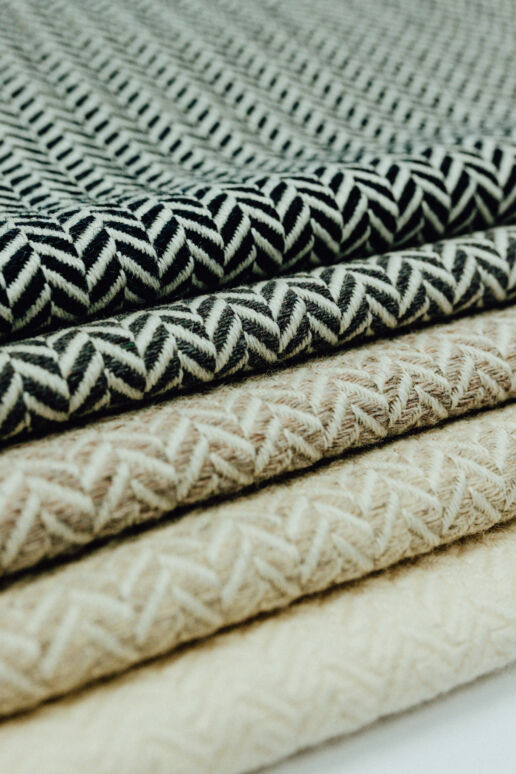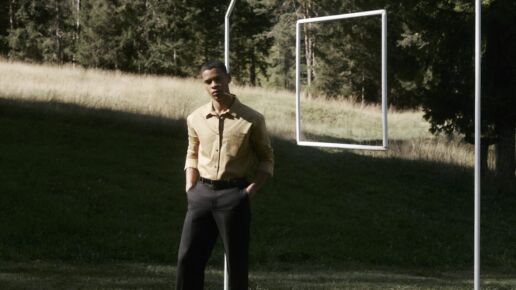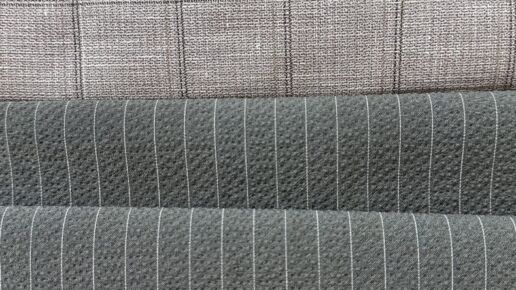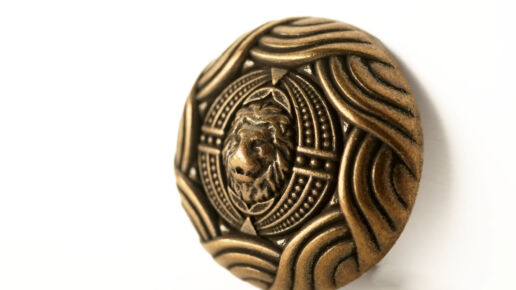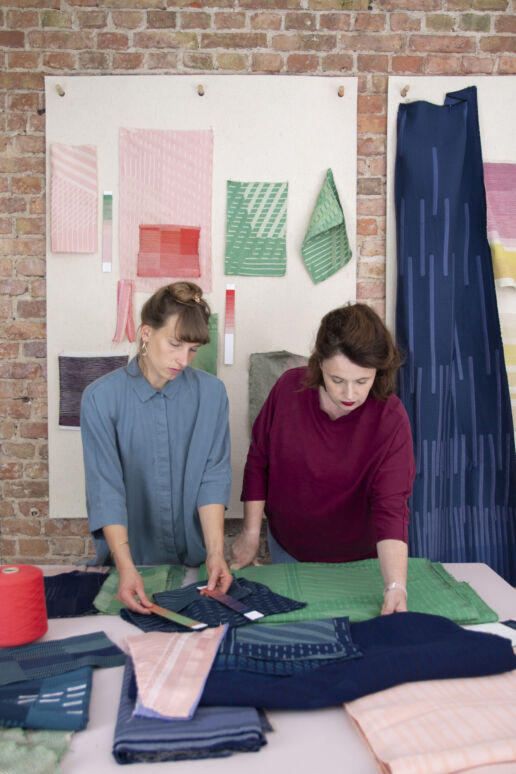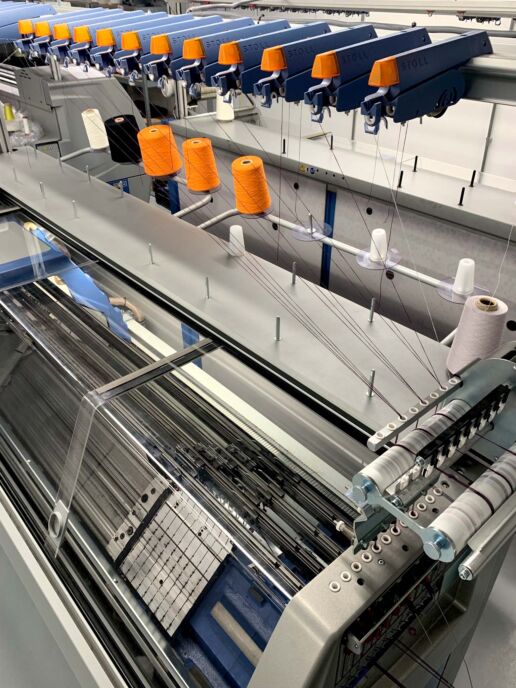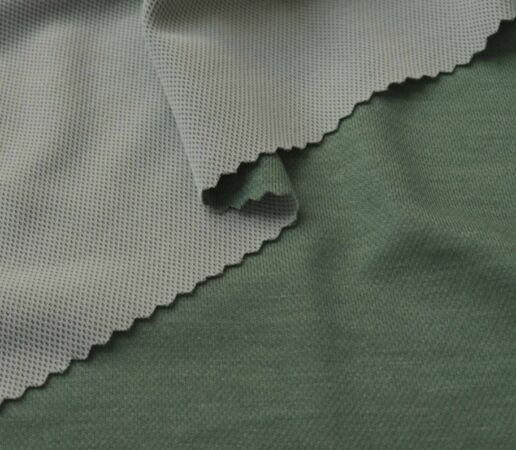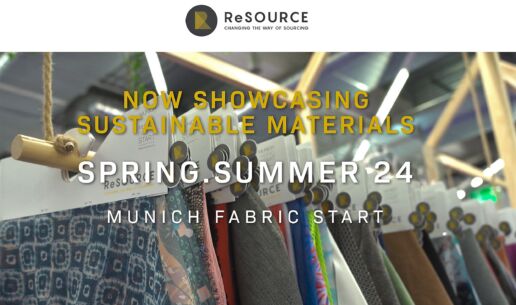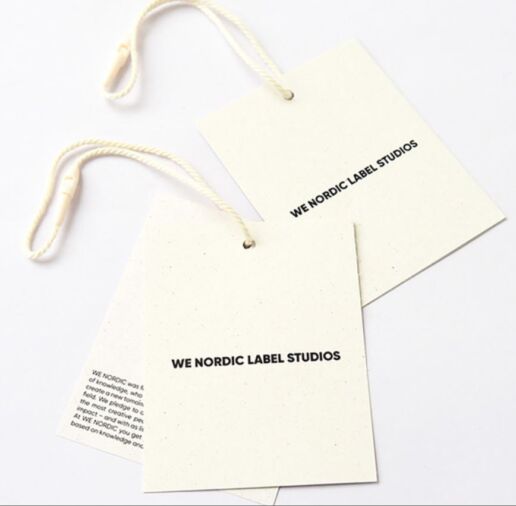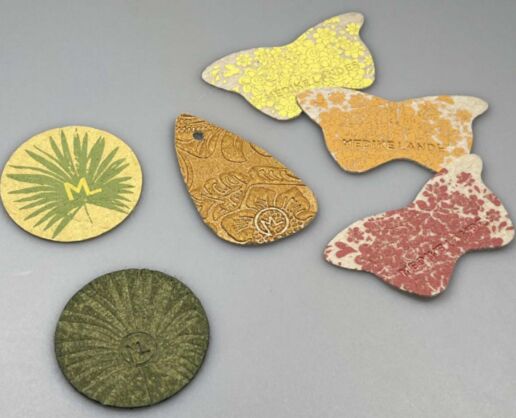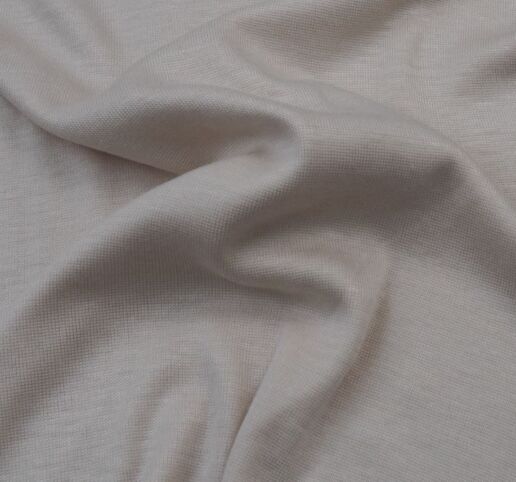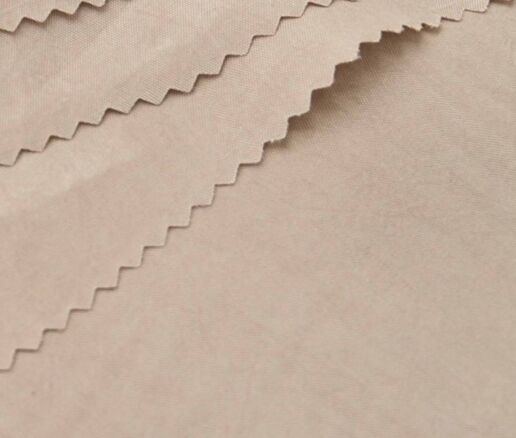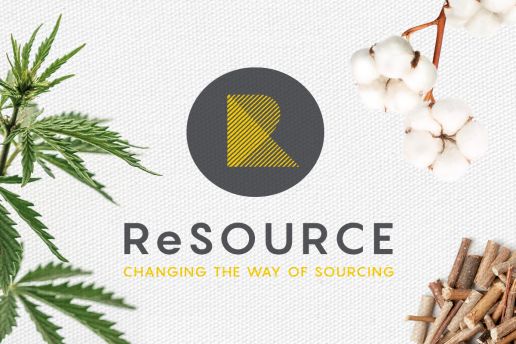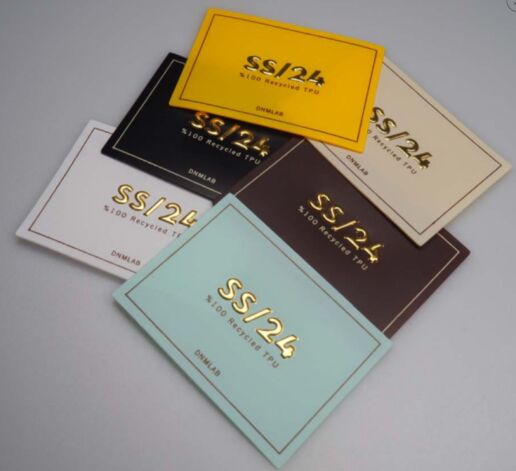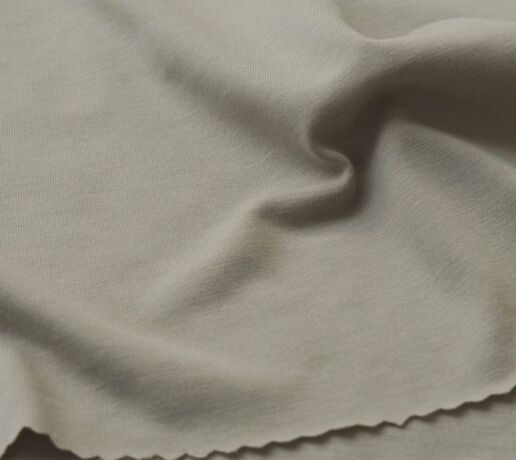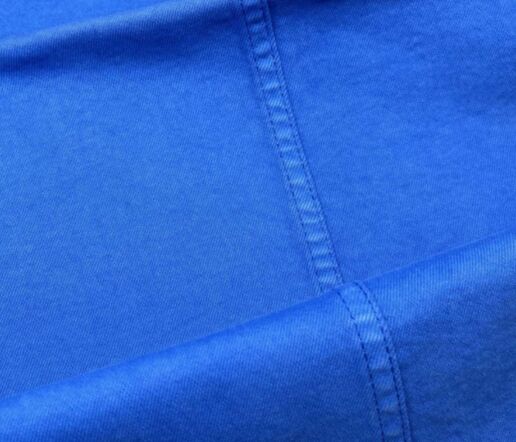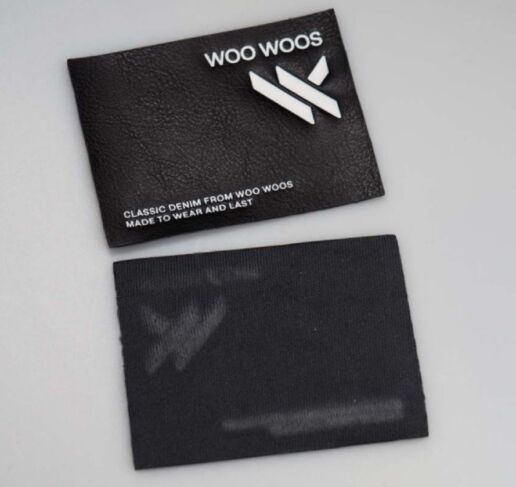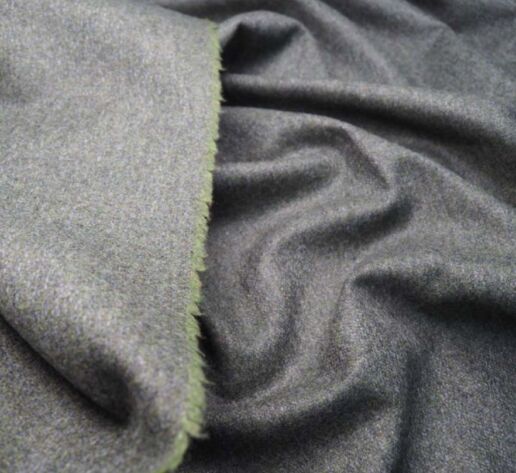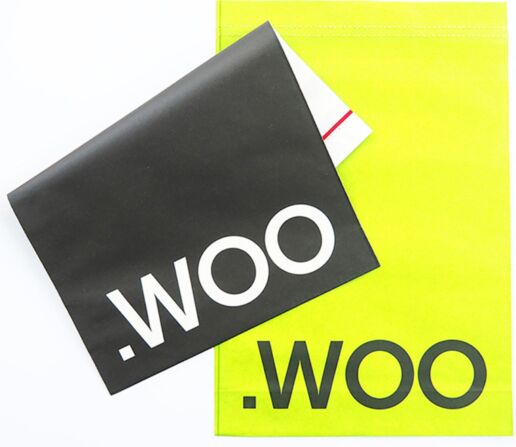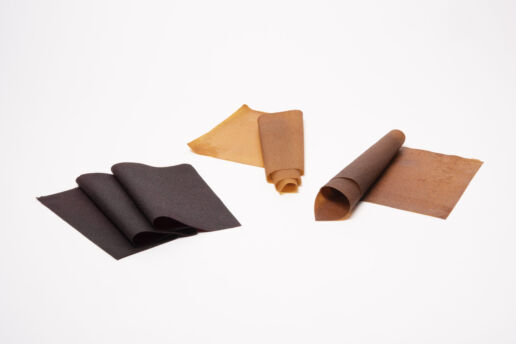Fashion
Cooperation is key - Sustainable Innovations
Local and recycled: Enschede Textielstad was founded in 2013 by Annemieke Koster to create responsibly produced fabrics from recycled yarns and local raw materials such as flax, hemp and wool for apparel and interior textiles. To keep the supply chain as short and regional as possible, one of the main focuses of the concept is to develop smart and circular uses of waste streams and local resources – for example, Dutch wool. Its quality is not good enough to make clothes from, and to date there has been no viable business model in sight for this resource – so it has been burned. However, what is not good enough for clothing may be absolutely sufficient for other purposes, so Enschede Textielstad now weaves fabrics from the wool that are ideal for upholstered furniture.
The same applies to linen – there have been no projects with economic viability in the Netherlands to date. To change this, The Linen Project was founded in 2019 as an initiative of Crafts Council Nederland and ArtEZ University of Fine Arts (see feature in also this Sustainable Innovations issue). In 2020, the two projects began a collaboration based on division of labor, with Enschede Textielstad acting as a weaving mill for flax cultivated in the Netherlands.
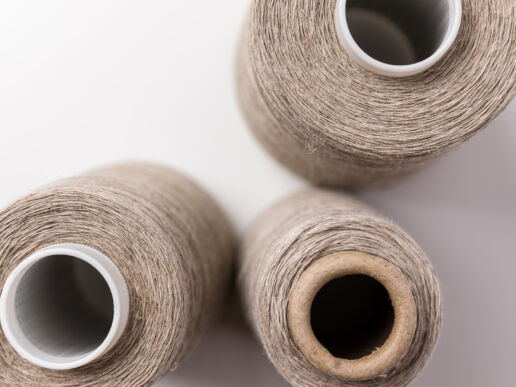
“We are bridging the gap between mass production and laboratory scale testing. We do so with a focus on sustainable, local and social production on the most innovative machine the industry has to offer. With our investment and expertise we help the industry move forward by testing new materials in early stages of development.”
ANNEMIEKE KOSTER, FOUNDER ENSCHEDE TEXTIELSTAD
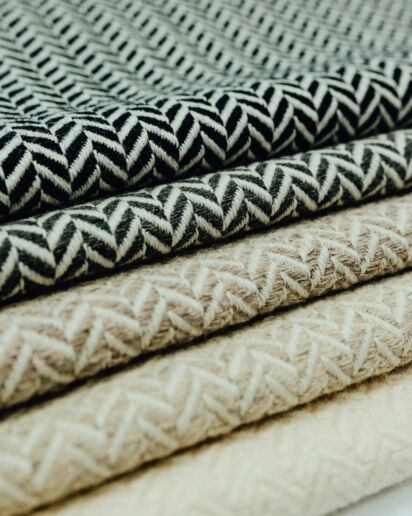
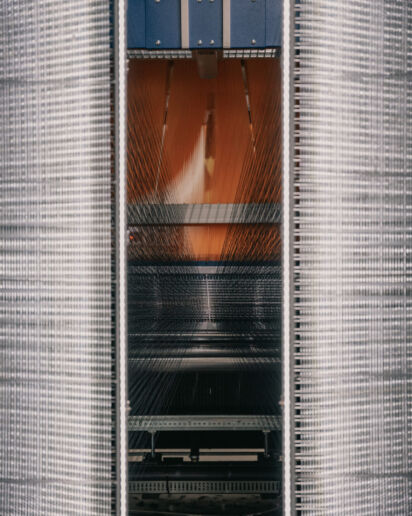
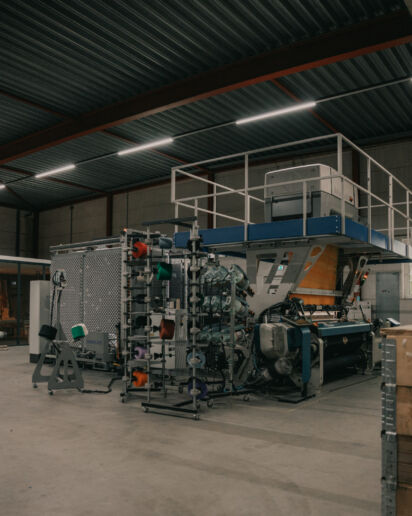
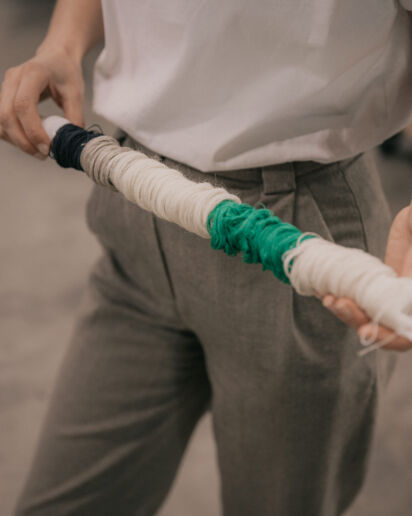
This collaboration is accompanied by a new cooperative business model: instead of simply selling the fabric by the meter to customers, a subscription model was designed for The Linen Project. Customers become part of the supply chain and share responsibility for the process of harvesting, weaving and finishing. The fabrics are then sold as “lots”, with all the imperfections as these are part of the subscription.
———————————————————————–
THIS MIGHT ALSO BE INTERESTING FOR YOU
BLUEZONE Signature Spring.Summer 25 – Part III
23. April 2024
The aim is to showcase not only the Japanese heritage ofthe ancient hand-stitch technique but also to raise awareness about the significance of repairing and repurposing clothing.
Fabric Trends Spring.Summer 25 – Part VI
18. April 2024
With a rich legacy and a focus on sustainability, they offer a diverse range of ecofriendly fabrics like Modal, Tencel, Linen, Organic and Regenagri Cotton. Their commitment to quality meets the latest fashion trends through innovative designs.
The latest accessory developments for Spring.Summer 25 – Part III
16. April 2024
With new recycled materials and innovative dyeing techniques, they create environmentally friendly designs. Organic polyester gives additional sustainability, while customised designs emphasise personal style.
Circularity is key - Sustainable Innovations
From old to new: Pre-Loved is a biotextile concept in which new products are created from used post-consumer textile waste. In a unique production process, low-quality mixed textile fibres are transformed into a robust, paper- and leather-like material that is suitable for a variety of applications – from fashion to interior design and product design.
Designer Sarmite Polakova gives waste a new meaning in this context: instead of something negative, she perceives it as a surplus recyclable material that can, however, at the same time be a resource for the creation of something new – the focus here is on circularity: it is about the recyclability of the material; a product made by Studio Sarmite can be dissolved at the end of its life and the textile fibres can be used for the next production cycle. The lightweight material displays a processuality, revealing a new aesthetic and highlighting each previous life of a worn garment through nuances of colour and texture. It can feature marble-like patterns as well as hues accentuated by natural dyes.
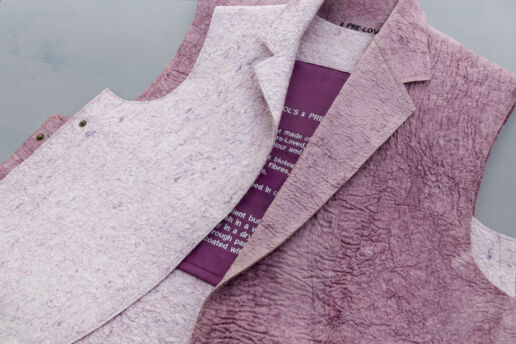
“The term ‘waste’ should be seen as a surplus rather than something negative and thus can be turned into a resource for creating something new.”
SARMITE POLAKOVA
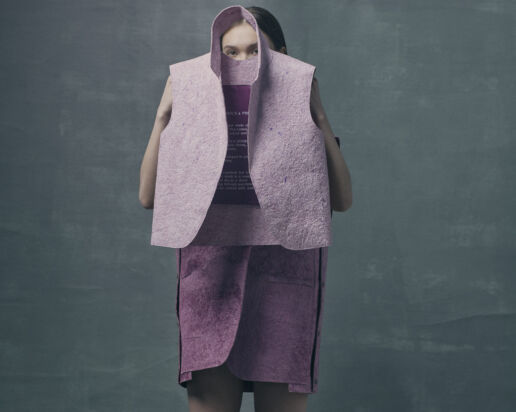
Cooperation is key – first Sarmite Polakova of Studio Sarmite teamed up with colour specialist Roua Alhalabi of Roua Atelier. The result of the collaboration is a groundbreaking dyeing method for blended fabrics based on natural pigments. The dyeing process is integrated into the production of the organic biotextiles and leads to a unique design language that gives room for surprising patterns and a certain playfulness. Moreover, the two designers have found a way to extract the dye during the recycling process of the textiles and use it for the next life cycle without the need for additional resources.
“Nature gives us a lot of resources that can be used in the natural dye industry. In fact, everything around us can be used to make color and support new materials. By using eco- riendly materials, we can become more sustainable and make a good impact.”
ROUA ALHALABI
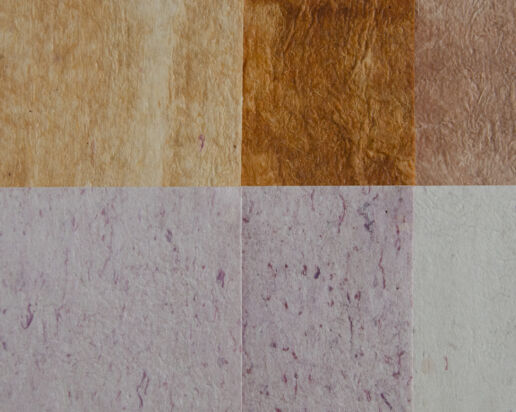
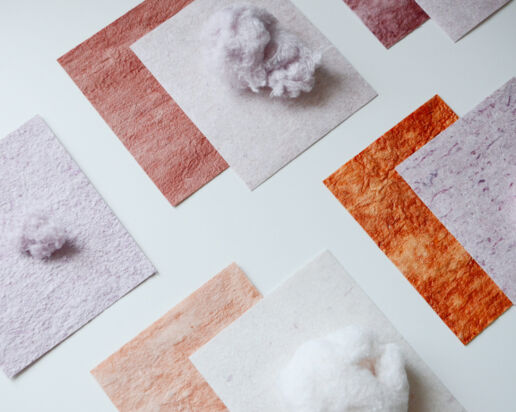
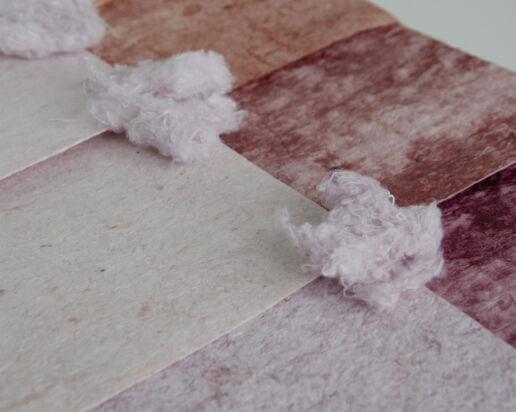
———————————————————————–
THIS ALSO MIGHT BE INTERESTING FOR YOU
BLUEZONE Signature Spring.Summer 25 – Part III
23. April 2024
The aim is to showcase not only the Japanese heritage ofthe ancient hand-stitch technique but also to raise awareness about the significance of repairing and repurposing clothing.
Fabric Trends Spring.Summer 25 – Part VI
18. April 2024
With a rich legacy and a focus on sustainability, they offer a diverse range of ecofriendly fabrics like Modal, Tencel, Linen, Organic and Regenagri Cotton. Their commitment to quality meets the latest fashion trends through innovative designs.
The latest accessory developments for Spring.Summer 25 – Part III
16. April 2024
With new recycled materials and innovative dyeing techniques, they create environmentally friendly designs. Organic polyester gives additional sustainability, while customised designs emphasise personal style.
Next Generation Material - Sustainable Innovations
Bio-based, locally produced, on demand: that’s MYCOTEX by NEFFA – a flexible material whose properties lie somewhere between leather, plastic and artificial leather. Production takes place in three steps: First, customisable and/or recyclable forms are created in an automated 3D design process. With the help of liquid fermentation, innovative materials are produced – the technique works for mycelium, but is also suitable for other biomaterials. In the end, the final textiles are produced by robotic applications without any weaving, cutting or sewing. In this way, the modelling process is similar to the injection moulding process – except that only natural materials are used instead of plastics.
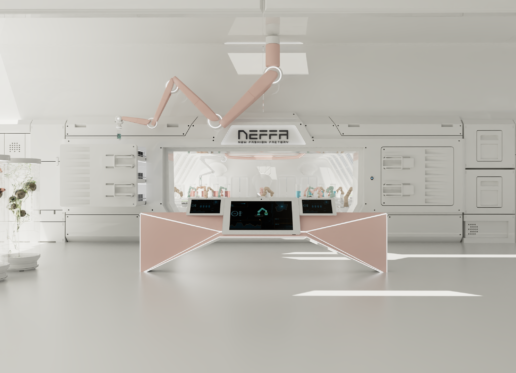
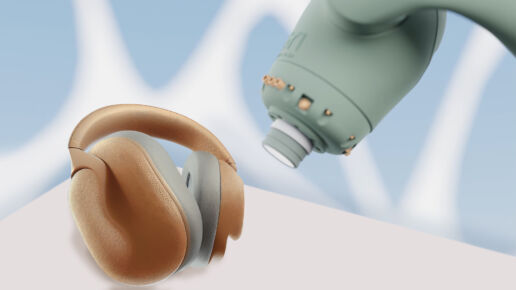
In leather production, the most resource-intensive factors are the land required for animal husbandry, the consumption of water for tanning, the energy required and the CO2 emissions. It is precisely in this production chain where MYCOTEX comes into play: Resource-saving robotic applications can save 10 to 30 percent of waste, and in addition, the production of materials and products takes place directly on site, so there are no emissions for transport. The textiles are biodegradable and can even be composted at home.
More than Mycelium: At the beginning of the project, founder Aniela Hoitink focused in particular on the material MYCOTEX. Within the last three years, this has developed into NEFFA, a completely automated manufacturing method for different types of biomaterials. NEFFA stands for New Fashion Factory. The innovative system is based on automation, can be recycled and offers unlimited freedom of design. The patented process offers unprecedented design freedom to create silhouettes and textures that would never have been possible with traditional manufacturing methods and creates a local and completely transparent process that can be adapted to constant changes. For the textiles of tomorrow.

“The fashion and textile industry is working on steps to improve: material innovation, better dyeing processes, a reduction of water, quick fixes that are needed right now. This will not be enough in the future. We need a big step to transform the industry. And we need it to be local, with a better working environment and without waste.”
ANIELA HOITINK
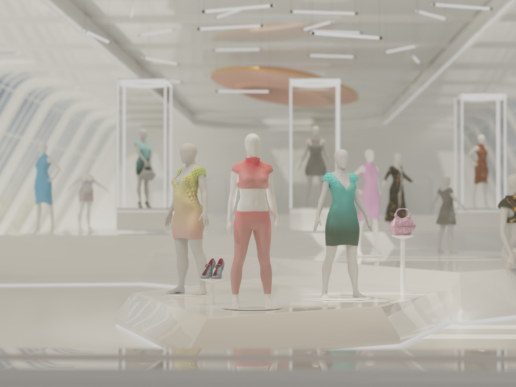
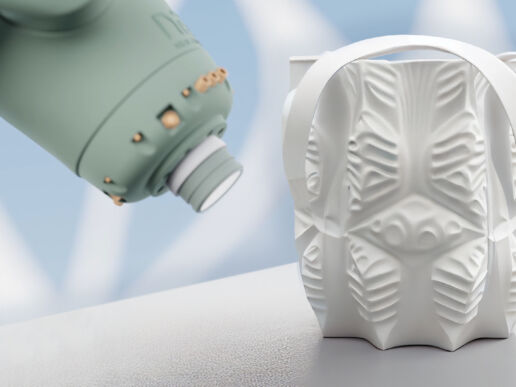
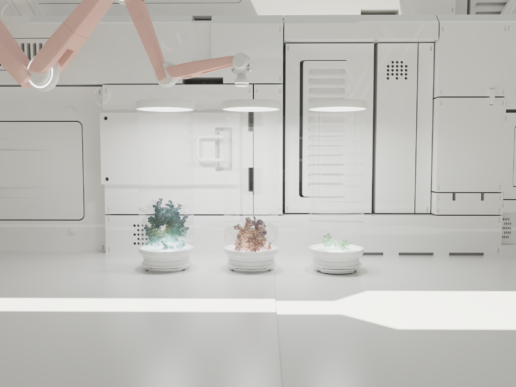
———————————————————————–
THIS ALSO MIGHT BE INTERESTING FOR YOU
BLUEZONE Signature Spring.Summer 25 – Part III
23. April 2024
The aim is to showcase not only the Japanese heritage ofthe ancient hand-stitch technique but also to raise awareness about the significance of repairing and repurposing clothing.
Fabric Trends Spring.Summer 25 – Part VI
18. April 2024
With a rich legacy and a focus on sustainability, they offer a diverse range of ecofriendly fabrics like Modal, Tencel, Linen, Organic and Regenagri Cotton. Their commitment to quality meets the latest fashion trends through innovative designs.
The latest accessory developments for Spring.Summer 25 – Part III
16. April 2024
With new recycled materials and innovative dyeing techniques, they create environmentally friendly designs. Organic polyester gives additional sustainability, while customised designs emphasise personal style.
Drawn by the sun - Sustainable Innovations
Textiles as witnesses of time: SLOW PATTERNS is a collection by the Berlin studio Meyers & Fügmann that changes over time due to the influence of sunlight. This works by using an unconventional technique that combines the natural and the artificial. In concrete terms, this means that European is woven and dyed in Europe by hand, with the side effect of preserving traditional skills of the European textile industry. The collection combines wool with synthetic yarns. When the textiles are exposed to UV light, the natural dyes fade over time, while the stable synthetic colours retain their shades, changing the materials and eventually revealing delicate patterns.
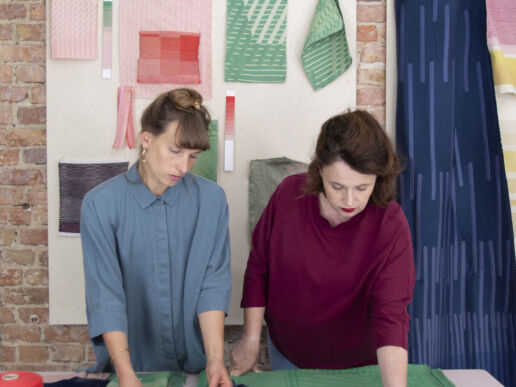
The textiles have the peotic power of tracing time. The changes in the colours make the ageing process visible and make transience a subject of discussion – spiritual as well as material. Seeing the textiles develop creates an emotional relationship, as both the owners and the objects age side by side. The textiles thus reflect and make transience visible. In doing so, they raise questions about physical obsolescence. Instead of connoting these aspects negatively, SLOW PATTERNS encourages us to value the products over their entire lifespan and to accept and celebrate their changes as well as our own.
A sign against fast fashion: the low lightfastness of natural materials is often seen as a shortcoming. Meyers & Fügmann, on the other hand, show with their project how aesthetically natural colours change and that beauty can lie in this process. SLOW PATTERNS thus becomes a plea for the dignity and vitality of natural colours.
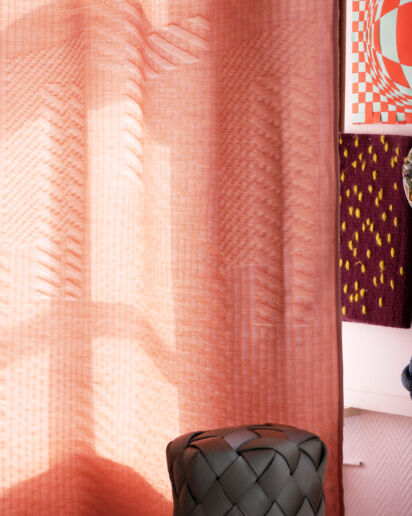
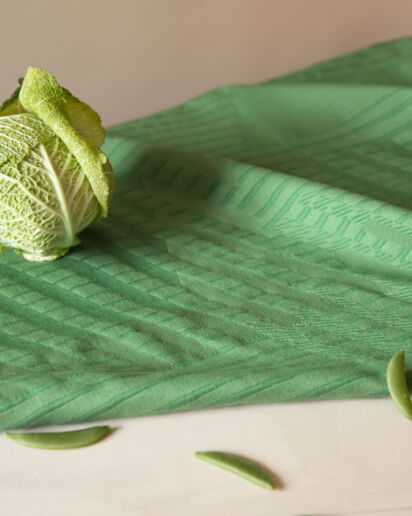
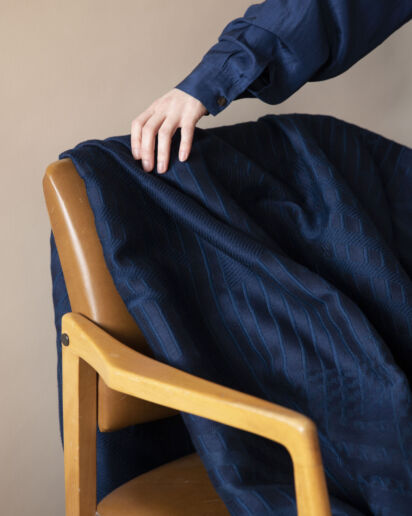
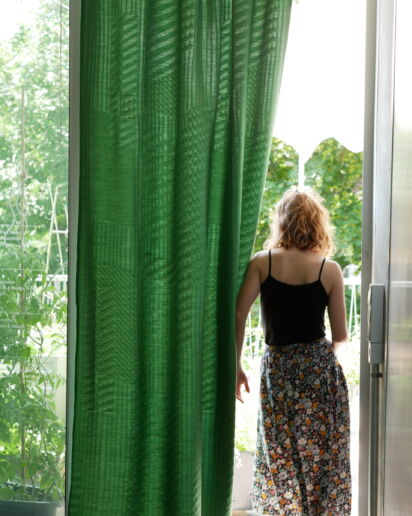
“Lightfastness is a relevant topic for future industries, as natural and recycled dyes and fibers demonstrate lower lightfastness.
Our approach is to show the liveliness of natural colours and romote them as a real alternative to synthetic dyes, opening markets for less durable colours. The aging process is designed into the product in order to foster a debate about slow consumerism and the relationship we have with our belonging.”
SARAH MEYERS AND LAURA FÜGMANN
———————————————————————–
THIS ALSO MIGHT BE INTERESTING FOR YOU
BLUEZONE Signature Spring.Summer 25 – Part III
23. April 2024
The aim is to showcase not only the Japanese heritage ofthe ancient hand-stitch technique but also to raise awareness about the significance of repairing and repurposing clothing.
Fabric Trends Spring.Summer 25 – Part VI
18. April 2024
With a rich legacy and a focus on sustainability, they offer a diverse range of ecofriendly fabrics like Modal, Tencel, Linen, Organic and Regenagri Cotton. Their commitment to quality meets the latest fashion trends through innovative designs.
The latest accessory developments for Spring.Summer 25 – Part III
16. April 2024
With new recycled materials and innovative dyeing techniques, they create environmentally friendly designs. Organic polyester gives additional sustainability, while customised designs emphasise personal style.
Smart Knitting - Sustainable Innovations
When the programmers of KNITWEAR LAB teamed up with 3D software specialists, a completely new idea for more sustainable, cost-efficient and design-oriented pattern development and knitwear production emerged. By combining virtual and material knitting, it is possible to reduce the massive waste during the pattern and pre-production phase in the industry and to further advance knitwear development with the help of smart technologies. Knitting on a new level: The revolutionary aspect of the method is the combination of innovative-virtual 3D technology with classic-conventional knitwear. The virtual design can be implemented exactly as you see it, while the actual knitted fabric that you perceive haptically and visually can be virtualised exactly as it was knitted.
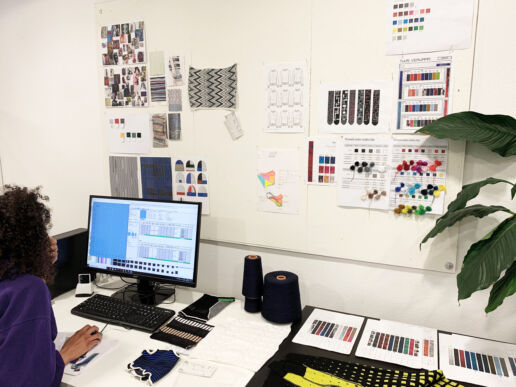
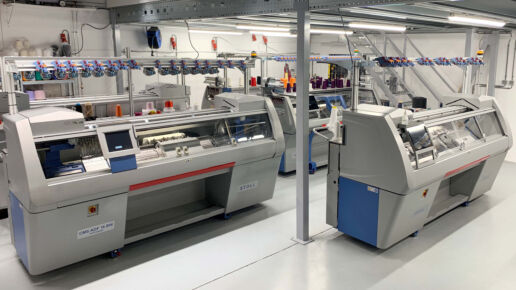
When knitting meets 3D software, there are several advantages. Designs can be improved and adjusted at an early stage in terms of design process or colouring to efficiently create virtually producible and realistic prototypes. In addition, the combination of knitwear and digital visualisation offers enormous savings potential: the waste of materials, resources and transport can thus be reduced. Furthermore, the fits for sampling and production are more accurate through Virtual Knitting, which is why, ideally, fewer samples need to be produced. Last but not least – the method significantly shortens the time from design to market and enables early commercial validation of the products, thus offering a win-win in the aspects of economic and ecological sustainabilit.
“A revolutionary method for industrial knitwear development:
A connection between virtual and material(physical) knitting, which creates a whole new world for sustainable, cost-efficient and design-driven sample development and knitwear production. KNITWEAR LAB will reduce the massive waste during the sample and pre-production stage in the industry with the use of extensive knitwear knowledge of the programmers of KNITWEAR LAB combined with the newest 3D software.”
Cherish Brouwer, Co-Founder & Designer Knitwear Lab
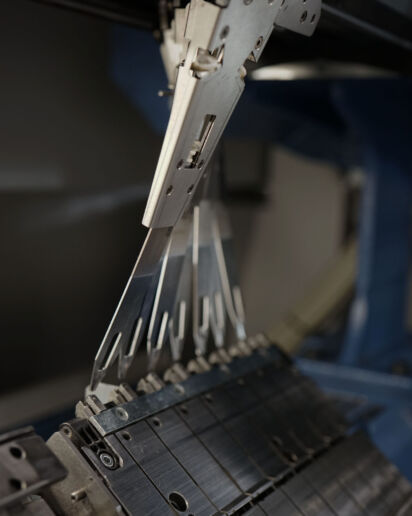
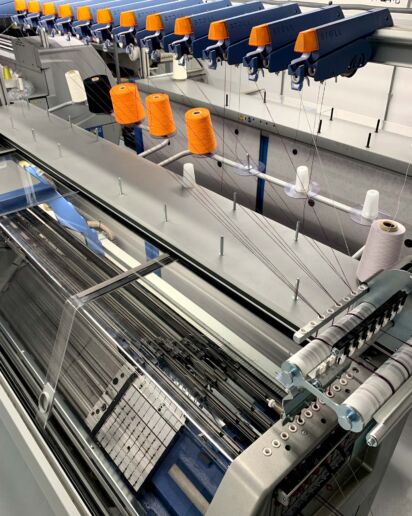
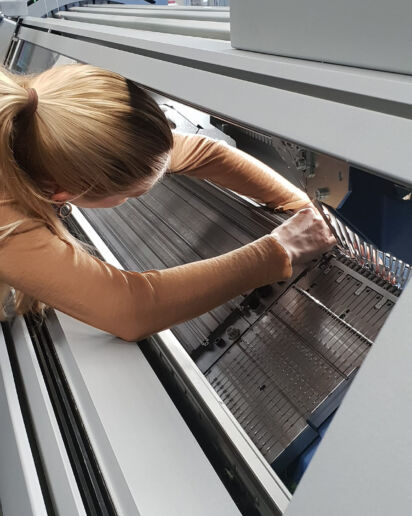
———————————————————————–
THIS ALSO MIGHT BE INTERESTING FOR YOU:
BLUEZONE Signature Spring.Summer 25 – Part III
23. April 2024
The aim is to showcase not only the Japanese heritage ofthe ancient hand-stitch technique but also to raise awareness about the significance of repairing and repurposing clothing.
Fabric Trends Spring.Summer 25 – Part VI
18. April 2024
With a rich legacy and a focus on sustainability, they offer a diverse range of ecofriendly fabrics like Modal, Tencel, Linen, Organic and Regenagri Cotton. Their commitment to quality meets the latest fashion trends through innovative designs.
The latest accessory developments for Spring.Summer 25 – Part III
16. April 2024
With new recycled materials and innovative dyeing techniques, they create environmentally friendly designs. Organic polyester gives additional sustainability, while customised designs emphasise personal style.
The clothing of the future - Sustainable Innovations
Every year, more than 120 million tons of textile fibers are processed worldwide – more than a third of them are petroleum-based synthetic fibers, i.e. resource- and emission-intensive, causing waste and polluting the environment. An alternative is needed. But: Where do the fibers for the clothes of the future come from – are textiles that grow on trees or shoes that come from the sea a pure utopia?
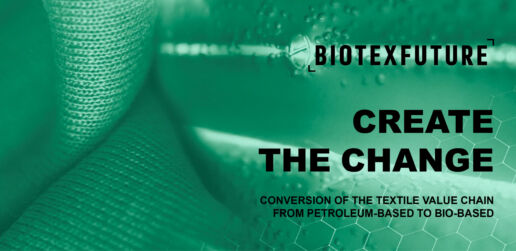
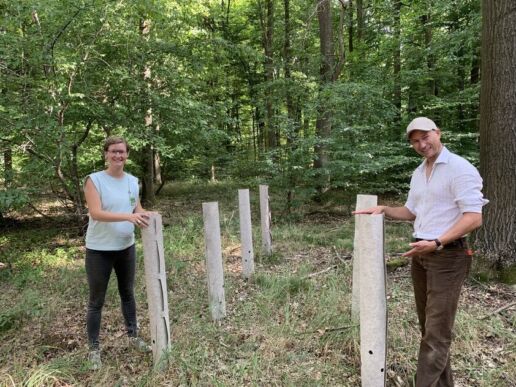
As part of the BIOTEXFUTURE Germany innovation space, leading research teams from the textile sector and industry are driving forward the development of bio-based textiles. Their aim is to accelerate the structural change towards a bioeconomy in this sector. On top of that, the ambition is also to find alternatives and solutions for some of the most important challenges currently facing the textile industry – from impregnation and dyes to elastane alternatives as well as textile recycling and microplastic filling in sports fields. On the research side, one of the world’s leading Institutes for Textile Technology at RWTH Aachen University (ITA) is responsible together with the Chair of Technology and Organisational Sociology (STO). For the industry, this part is taken over by the global company adidas AG.
Bye bye, plastic! The long-term goal is to be able to replace virgin polyester as a raw material. In concrete terms, this means that BIOTEXFUTURE is working in ten different projects to convert the individual steps along the textile value chain from petroleum-based to bio-based in the future plus to make the basic research carried out for this purpose accessible to the broad masses as quickly as possible. From algae to artificial turf to fungi: the idea behind the project ALGAETEX, for example, is to use biopolymers obtained from algae for use in textiles. BioTurf is about the development of an artificial turf structure made of bio-polyethylene that is at least as efficient as the petroleum-based materials used so far while being recyclable and without microplastic filling at the same time; the Fungal Fibers project is about the production of bio-based textile fibers from a promising fungusbased production process for the sports and medical sectors.
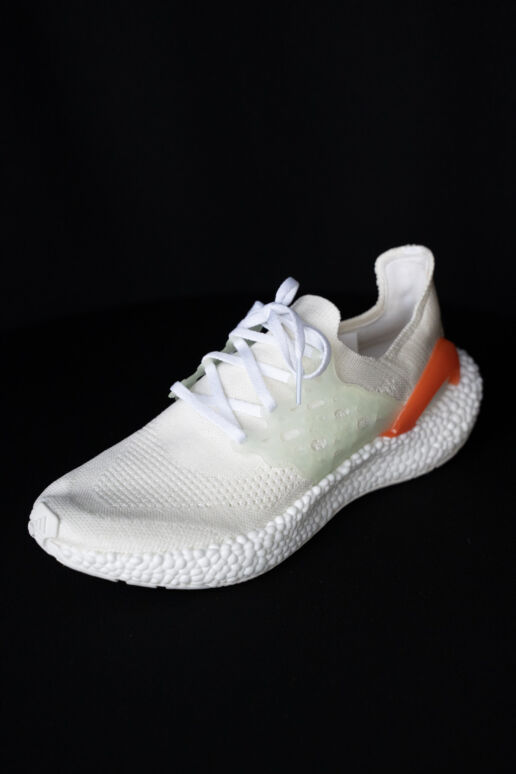
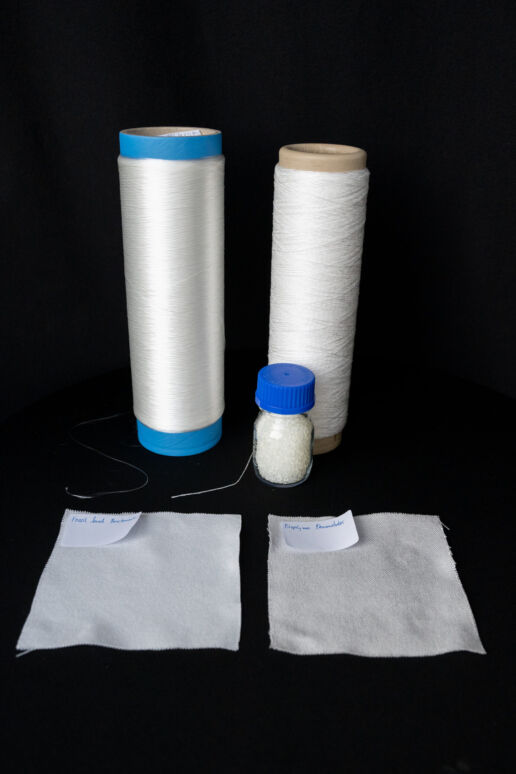
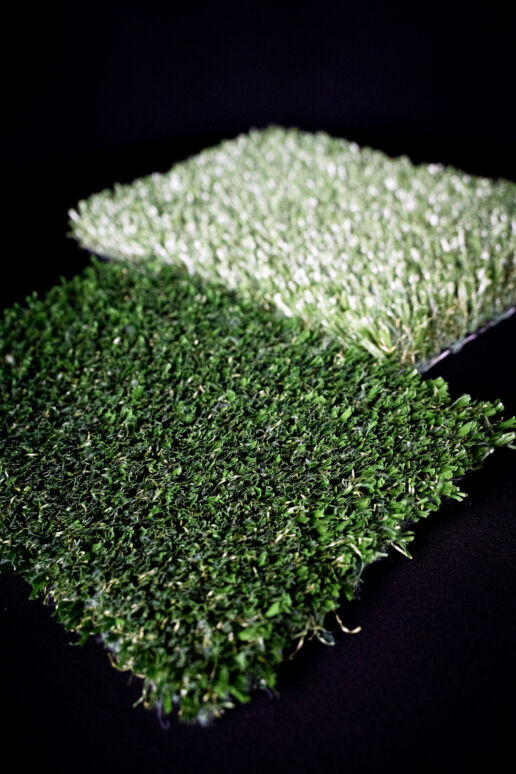
“The textile industry is not yet sustainable and burdened with massive environmental problems. Natural raw materials and ew textile technologies are a great opportunity for the future to meet the numerous challenges of the textile industry. This concerns the replacement of petroleum for polyester roduction by biological materials such as algae or fungi as well as bio-based coatings, dyes or completely new manufacturing processes. However, the major challenges of the textile sector can only be solved in close cooperation between research and industry. This is why we are committed to the BIOTEXFUTURE innovation space and would like to attract numerous new supporters in the coming years.”
Nicole Espey, Project Manager BIOTEXFUTURE
———————————————————————–
THIS MIGHT ALSO BE INTERESTING FOR YOU:
BLUEZONE Signature Spring.Summer 25 – Part III
23. April 2024
The aim is to showcase not only the Japanese heritage ofthe ancient hand-stitch technique but also to raise awareness about the significance of repairing and repurposing clothing.
Fabric Trends Spring.Summer 25 – Part VI
18. April 2024
With a rich legacy and a focus on sustainability, they offer a diverse range of ecofriendly fabrics like Modal, Tencel, Linen, Organic and Regenagri Cotton. Their commitment to quality meets the latest fashion trends through innovative designs.
The latest accessory developments for Spring.Summer 25 – Part III
16. April 2024
With new recycled materials and innovative dyeing techniques, they create environmentally friendly designs. Organic polyester gives additional sustainability, while customised designs emphasise personal style.
ReSOURCE manufacturers focus on bio-based alternatives & natural colorants II
ReSOURCE is the sourcing platform for environmentally friendly and responsibly produced textiles, apparel and accessories. Search, discover and source – all in one place. Order sustainable materials online at any time on www.resource-textiles.com
With around 700 samples, the area for innovative fabrics and additionals that are bio-certified, bio-based, recycled, recyclable or from regenerative sources has once again grown significantly compared to previous seasons.
It’s the bio-based alternatives, eco-friendly finishes, recycled materials and innovative dyeing techniques using natural resources like coffee grounds that make the latest ingredients and accessories so forward-thinking. We’re featuring Spring.Summer 24 developments from some of our ReSOURCE exhibitors that you won’t want to miss:
ALGA CARTA
Certified Alga Carta paper contains seaweeds, that damages the eco system of Venice lagoon.
- Categories: Natural
- Composition: 100% Paper
- Certifications: FSC
- Applications: Hangtags
- Supplier: We Nordic Label Studios
————————————————————————–
PINATEX
Pinatex is a leather alternative made from waste pineapple leaf fibre and corn based PLA.
- Categories: Leather & Alternatives, Recycled
- Composition: 100% Pinatex®
- Certifications: BSCI amfori
- Applications: Accessoires, Labels, Leather Accessories, Leathers & Alternatives
- Supplier: Medike Landes Lederwarenfabrik GmbH
————————————————————————–
ROICA
Roica is an agile, multi-faceted and sustainable stretch that redefines the new circularity, delivering the style, support and finish, trusted to match the performance demands and ambitions of the new generation contemporary consumer. ROICA™ V550, part of the ROICA Eco-Smart™ family, is the premium, sustainable stretch yarn that degrades without releasing harmful substances into the environment, according to the Hohenstein’s environmental certification.
- Categories: Biodegradable, Pollution free, Regenerated Celulosics
- Composition: 3% Roica™ V550, 97% Tencel®
- Certifications: Bluesign, ISO 14001, STeP by Oeko-Tex®
- Applications: Degradable Textilies, Active Wear, Jersey Fabrics, Lenzing™ Technologies, Regenerative Textiles
- Supplier: Feinjersey Fabrics GmbH
————————————————————————–
UMORFIL
UMORFIL® Beauty Fiber® was created to pursuit innovation in textile products that are skin-friendly and good for environment. It combines ocean collagen peptide amino acid with cellulose fiber through a technology known as supramolecular. It is a bionic fiber which are biodegradable and soft touch.
- Categories: Innovative Alternatives, Regenerated Celulosics
- Composition: 50% Tencel®, 50% Viscose
- Certifications: STANDARD 100 by Oeko-Tex®
- Applications: Leisurewear, Jersey Fabrics, Regenerative Textiles
- Supplier: ZEYNAR MESUCAT
————————————————————————–
EVERFRESH
EVERFRESH is a concentrated liquid formulated for neutralising and eliminating bad odours in carpets caused by smoke, vomit, urine, perspiration, spoiled foodstuffs and other spillages. It is also very effective in overpowering odours that are caused by carpet wetness, mildew and mould.
- Categories: Innovative Alternatives
- Composition: 35% Modal, 30% Polyester
- Certifications: Bluesign, STANDARD 100 by Oeko-Tex®
- Applications: Modal, Polyester Fabrics, Strick / Knit
- Supplier: ZEYNAR MENSUCAT
————————————————————————–
FILLSENS
Fillsens, a new fiber that’s exclusive to Pastel and that differs from the rest because it is continuous filament lyocell (as opposed to the staple fiber of Tencel) giving it a unique aspect, drape and handfeel.
- Categories: Regenerated Celulosics
- Composition: 100% Lyocell
- Certifications: FSC, STANDARD 100 by Oeko-Tex®
- Applications: Regenerative Textiles, Summer Weights, Viscose Fabrics
- Supplier: Paszel by Yilmazipek
————————————————————————–
NEXT SHOW
18/07 – 20/07/2023
New in HALL 2 | MOC Munich
ReSOURCE manufacturers focus on bio-based alternatives & natural colorants I
ReSOURCE is the sourcing platform for environmentally friendly and responsibly produced textiles, apparel and accessories. Search, discover and source – all in one place. Order sustainable materials online at any time on www.resource-textiles.com
With around 700 samples, the area for innovative fabrics and additionals that are bio-certified, bio-based, recycled, recyclable or from regenerative sources has once again grown significantly compared to previous seasons.
It’s the bio-based alternatives, eco-friendly finishes, recycled materials and innovative dyeing techniques using natural resources like coffee grounds that make the latest ingredients and accessories so forward-thinking. We’re featuring Spring.Summer 24 developments from some of our ReSOURCE exhibitors that you won’t want to miss:
CiCLO® is an additive that is combined with PES + Nylon and creates biodegradable spots in the matrix of the plastic that can be broken down by microbes.
- Categories: Biodegradable, Organic/Natural
- Composition: 50% kbA Cotton, 50% CiCLO® Polyester
- Certifications: Bluesign, OCS 100, STANDARD 100 by Oeko-Tex®
- Applications: Cotton Fabrics, Polyester Fabrics, Strick / Knit
- Supplier: Zeynar Mezucat
————————————————————————–
recycled TOB, foreign fibers free
- Categories: Organic/Natural, Recycled
- Composition: 27% rec Cotton, 70% Cotton, 3% rec Eslastan
- Certifications: BCI, GRS, STANDARD 100 by Oeko-Tex®
- Applications: Active Wear, Cotton Fabrics, Jeans, Denim, Recycled Textiles
- Supplier: Tejidos Royo
————————————————————————–
- Categories: Innovative Alternatives, Leather & Alternatives, Recycled, Regenerated Cellulosics
- Composition: 100% Vegea
- Certifications: BSCI amfori, GRS, STANDARD 100 by Oeko-Tex®
- Applications: Accessoires, Labels, Labels, Leather Accessories, Leathers & Alternatives
- Supplier: A-TEX Germany GmbH
————————————————————————–
Confirmed NEWOOL quality by Olimpias Group SRL.
- Categories: Recycled
- Composition: 5% Other Fibers, 25% rec Polyamide, 70% rec Wool
- Certifications: –
- Applications: Polyamide Textilies, Recycled Textiles, Woolen Fabrics
- Supplier: SEIDRA TEXTILWERKE
————————————————————————–
100% Biodegradable TPU,white/black/yellow/blue/brown/beige
Recyclable green product, resolves after 2-4 years.
- Categories: Biodegradable
- Composition: 100% Thermoplastisches Polyurethane
- Certifications: GRS, STANDARD 100 by Oeko-Tex®
- Applications: Accessoires, Biobased Textiles, Labels, Leather Accessories
- Supplier: KASIV LEATHER LABEL
————————————————————————–
Paptic is made from wood fibers from controlled and sustainably managed forests. It was developed as a replacement for single-use plastic. It is reusable, recyclable, resistant and foldable.
- Categories: Regenerated Cellulosics
- Composition: 100% Paptic®
- Certifications: FSC
- Applications: Accessoires, Packaging, Bags
- Supplier: A.TEX Germany GmbH
————————————————————————–
NEXT SHOW
18/07 – 20/07/2023
New in HALL 2 | MOC Munich
100 % collagen, 0 % plastic - Sustainable innovations
100 % collagen, 0 % plastic
GOLD by WINT Design Lab Robin Hoske and Felix Rasehorn
Sustainable Innovations
If you think that “GOLD” by WINT Design Lab was inspired by the shiny precious metal, you’re wrong – the design research project draws its inspiration from the outer tissue layer of the cow’s intestine. This extremely thin, elastic and tear-resistant membrane, also called gold beater’s skin, was used in the past as a separating layer when beating gold leaf.
Product designers Robin Hoske and Felix Rasehorn, founders of WINT Design Lab, together with Mimotype Technologies, saw the potential in the material to create durable and recyclable high-performance textiles free of plastic.
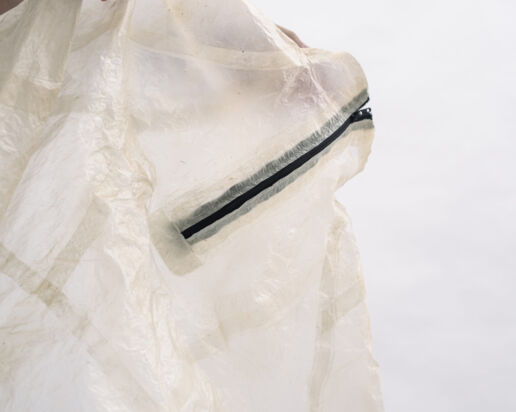
Animal skins, due to their properties, have been used by humans throughout history to create textiles with water-repellent capabilities. During a one-year research fellowship, WINT therefore investigated the aesthetic and functional design features of the skin of the goldbeater and sequenced the RNA. The goal: to synthetically replicate the material properties, develop a biopolymer and use it to make high- performance textiles. In cooperation with Mimotype
Technologies, a biotech start-up from Berlin, and funded by the BIOTEXFUTURE project of the ITA Institute of Textile Technology, the researchers succeeded in cultivating the unique material in bioreactors. The result is bio-synthetically grown collagen substrate – vegan and biodegradable – from which WINT has reated a running jacket that meets both aesthetic and functional demands.
While the global demand for synthetic textiles continues to rise and their production consumes large amounts of petrochemicals, energy and finite raw materials, a new generation of water-repellent outdoor jackets is thus born.
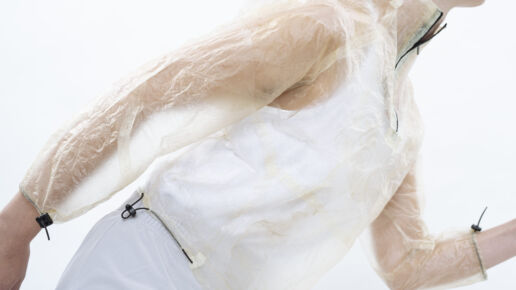
Source: GOLD
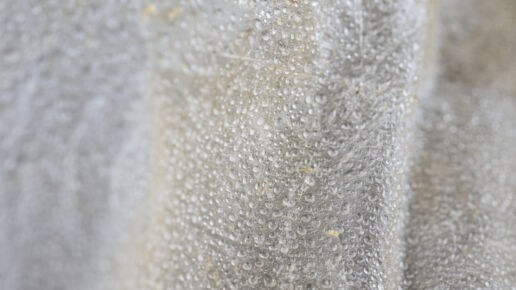
Source: GOLD
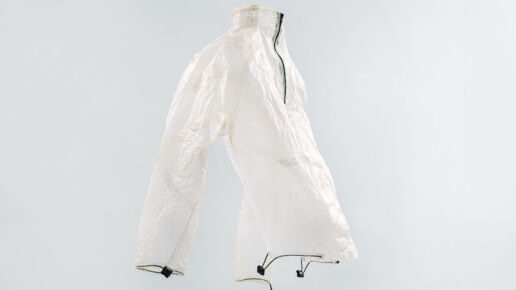
Source: GOLD
“As designers we have to shift the reasoning of our practice from convenience to impact.”
———————————————————————–
THIS MIGHT BE ALSO INTERESTING FOR YOU:
BLUEZONE Signature Spring.Summer 25 – Part III
23. April 2024
The aim is to showcase not only the Japanese heritage ofthe ancient hand-stitch technique but also to raise awareness about the significance of repairing and repurposing clothing.
Fabric Trends Spring.Summer 25 – Part VI
18. April 2024
With a rich legacy and a focus on sustainability, they offer a diverse range of ecofriendly fabrics like Modal, Tencel, Linen, Organic and Regenagri Cotton. Their commitment to quality meets the latest fashion trends through innovative designs.
The latest accessory developments for Spring.Summer 25 – Part III
16. April 2024
With new recycled materials and innovative dyeing techniques, they create environmentally friendly designs. Organic polyester gives additional sustainability, while customised designs emphasise personal style.
Let's get circular - Sustainable innovations
Using existing resources and creating something new from them: What if you didn’t dispose of the leftovers of freshly squeezed juice – but could create a new material from it? Germany is at the forefront of apple juice consumption, producing up to 200,000 tonnes of pomace per year, solid residues from the pressing process. Instead of reusing them, as has been the case up to now, mainly in biogas plants, for pectin extraction or as animal feed, textile and surface designer Verena Brom has been inspired to develop new material systems for various industries.
The designer studied at the Weißensee Art Academy in Berlin. In the project “A Matter of Fruit“, she produces various biodegradable films from pomace residues that can be used instead of synthetic material. Visually and characteristically, it can be classified as a paper, plastic or leather alternative, depending on its thickness, and offers potential for different areas of application – from interior design to the clothing industry. The material is suitable for laser cutting and engraving, but due to its fusibility it can also be welded or pressed into shape. In addition to the films, Verena Brom has developed a printing paste made from apple pomace that further expands the material’s design possibilities and areas of application.
After the first cycle of use, the material can be returned to the natural loop: For example, it can be turned into a plant pot that biologically decomposes after being potted into the soil. This brings Verena Brohm closer to her goal of using renewable resources – such as the by-products of the food industry – and to use design as a tool to optimise material cycles.
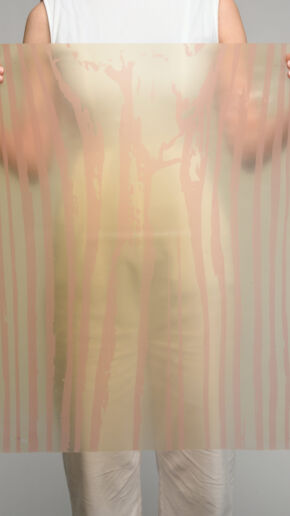
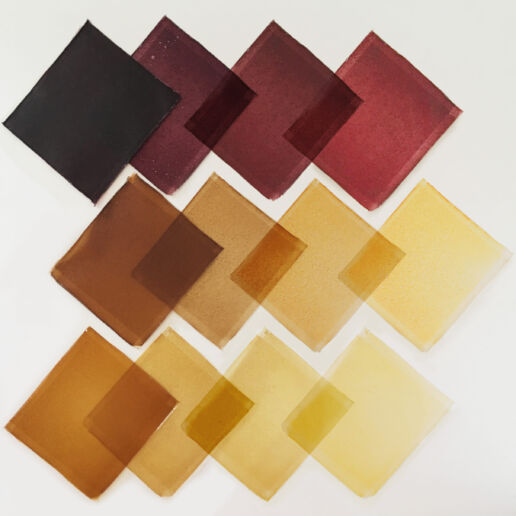
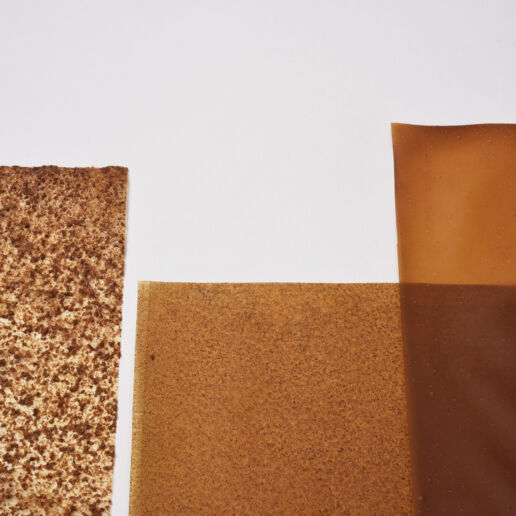
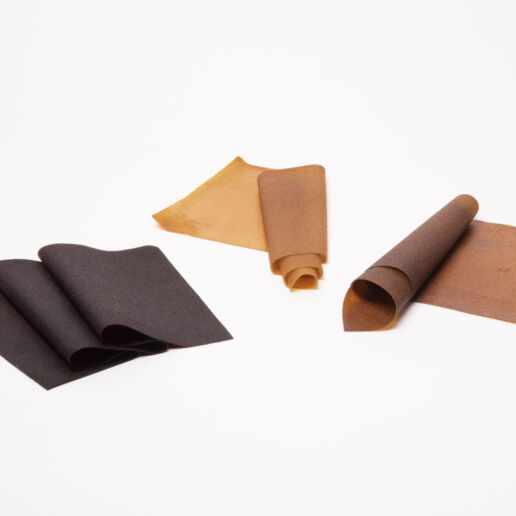
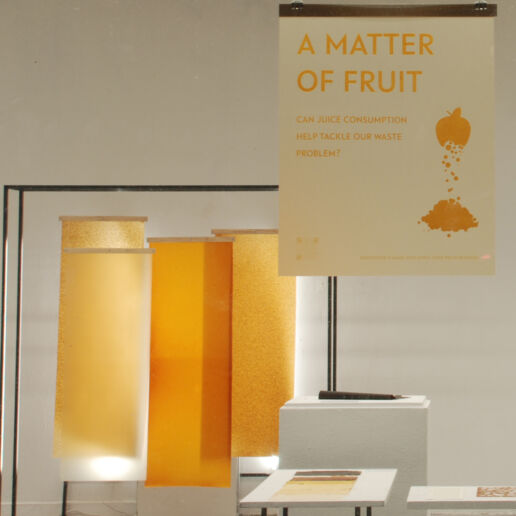
“When developing the material, it was important to use as few additives as possible – and to push boundaries:
how can different properties be developed solely through different processing methods? Using different techniques can expand the
scope for design and influences the haptic and translucency of the material:
from smooth to abrasive, from transparent to opaque – a big variety of options are possible without loosing the mono-materiality.“
———————————————————————–
THIS MIGHT BE ALSO INTERESTING FOR YOU:
BLUEZONE Signature Spring.Summer 25 – Part III
23. April 2024
The aim is to showcase not only the Japanese heritage ofthe ancient hand-stitch technique but also to raise awareness about the significance of repairing and repurposing clothing.
Fabric Trends Spring.Summer 25 – Part VI
18. April 2024
With a rich legacy and a focus on sustainability, they offer a diverse range of ecofriendly fabrics like Modal, Tencel, Linen, Organic and Regenagri Cotton. Their commitment to quality meets the latest fashion trends through innovative designs.
The latest accessory developments for Spring.Summer 25 – Part III
16. April 2024
With new recycled materials and innovative dyeing techniques, they create environmentally friendly designs. Organic polyester gives additional sustainability, while customised designs emphasise personal style.


